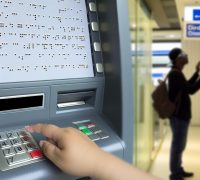The Significance of Braille in Dining Venues
Restaurants are increasingly recognizing the importance of inclusivity by integrating Braille into their menus. This development is crucial for enhancing accessibility and ensuring that visually impaired individuals have the same opportunities to enjoy dining experiences.
Understanding Braille
Braille is a tactile writing system used by people who are visually impaired. It consists of a series of raised dots that are felt with the fingertips. This remarkable system enables individuals to access and interpret information without the need for sight, thereby facilitating a more independent lifestyle. The inclusion of Braille in restaurants, especially on menus, plays a significant role in promoting equality by enabling visually impaired patrons to independently read and choose from the offerings available.
The introduction of Braille menus into dining establishments is not just a mark of accessibility but also a testament to a restaurant’s commitment to serving its diverse clientele. When visually impaired patrons have the ability to read the menu on their own, they experience not only the independence of choice but also the dignity of privacy. They are no longer required to informally or publicly ask companions or staff for assistance in the decision-making process.
Why Braille Menus Matter
The incorporation of Braille menus in restaurants is crucial for promoting independence and inclusivity for visually impaired diners. The availability of these menus allows them to explore the variety of offerings at their own pace and choice. By offering Braille menus, a restaurant ensures that each patron can enjoy their dining experience with the same level of comfort, privacy, and autonomy as any other guest. The provision of these menus means that people with visual impairments can take control of their dining experiences. This independence enriches their social experiences and contributes to making these venues more welcoming and inclusive.
The impact of such inclusivity in dining venues extends beyond enhancing individual autonomy. It fosters a sense of community by inclusively welcoming individuals with varying needs. This environment not only benefits those directly using the Braille menus but also serves as a learning opportunity for the wider community. Friends, family, and other guests gain insight into the needs of visually impaired individuals, fostering empathy, understanding, and respect.
Legal and Social Implications
In many places around the world, there are legal frameworks designed to protect the rights of individuals with disabilities, and to ensure that they have equal access to services and public amenities. In the United States, the Americans with Disabilities Act (ADA) is a significant piece of legislation that addresses such issues. The ADA mandates public accommodations, such as restaurants, to ensure that their services are accessible to people with disabilities. By providing Braille menus, restaurants not only comply with these legal stipulations, but they also affirm their commitment to equity and access for all patrons.
From a social perspective, the inclusion of Braille menus sends a powerful message about equality and respect. It challenges societal perceptions of disability and reinforces the principle that every individual deserves the same quality of service, regardless of physical abilities. This practice helps dismantle stereotypes and encourages a broader understanding that disabilities should not prevent individuals from experiencing and enjoying everyday activities, such as dining out.
Technological Advancements
The production and implementation of Braille menus have become increasingly feasible thanks to advancements in technology. Specialized Braille printers, also known as embossers, and translation software have simplified the process, allowing restaurants to create or update their menus with relative ease and accuracy. These technologies ensure that Braille text is accurately and consistently produced, enhancing the reliability of these menus for their users.
Moreover, the advent of digital Braille displays and refreshable Braille devices offers additional avenues for accessibility. These devices can convert digital text into Braille, providing an alternative for accessing not only menus but a vast array of digital content. As technology continues to evolve, so will the means by which information can be made accessible to visually impaired individuals, paving the way for even more inclusive environments.
While traditional Braille menus are essential, digital options offer additional flexibility and can be quickly updated to reflect changes in the menu, such as the introduction of seasonal items or changes in pricing. This capacity for rapid update ensures that visually impaired patrons have access to the most current information, further ensuring their autonomy and agency in decision-making.
Conclusion
The integration of Braille in restaurant menus goes beyond fulfilling a legal requirement; it marks an essential step toward creating a more inclusive society. By ensuring that all patrons have a fair and equal opportunity to experience dining, restaurants affirm their commitment to accessibility and demonstrate their dedication to fostering inclusiveness for all individuals, regardless of their sensory abilities.
There is a broader societal benefit to this integration; it challenges businesses and community members to reflect on their perceptions and practices regarding inclusivity. By openly adopting these measures, dining venues not only meet accessibility standards but also participate actively in creating a culture of understanding and respect for individuals with disabilities.
In conclusion, the presence of Braille menus in dining establishments is a reflection of a collective societal effort to promote equality and independence. It is a testament to the ongoing journey toward a world where every individual, with or without disabilities, can participate fully and equally in all facets of life. As more restaurants adopt these practices, we move closer to a future where inclusivity and equal access are the norms, empowering everyone to enjoy their dining experiences to the fullest.








